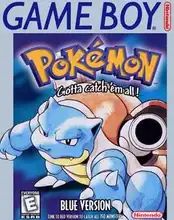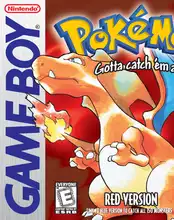Remember that feeling? The pixelated title screen, the iconic chiptune music swelling, and the impossible decision: which starter Pokémon would join you on your adventure? For many of us, the world of Pokemon games wasn't just a pastime; it was a fundamental part of growing up with a Game Boy glued to our hands.
Before the 3D graphics and online global trades, there were sprites, link cables, and a sense of wonder that felt truly boundless. Let's take a nostalgic trip back through the classic eras that defined the phenomenon.
The Beginning: Generation 1 (Game Boy)
It all started here. Pokémon Red and Blue landed in the West and changed everything. Suddenly, everyone was trying to "catch 'em all" across the Kanto region.
- Pokémon Red & Blue (1998): The originals. Introducing the core loop: catch, train, battle, trade. Facing off against your rival, challenging the Gym Leaders, and finally, taking on the Elite Four and the Champion. Pure, unadulterated adventure.
- Pokémon Yellow (1999): A special edition that followed the anime more closely. Pikachu followed you everywhere, you could get all three Kanto starters, and Jesse and James even showed up! It added a bit more personality to the familiar journey.
These games, with their simple yet deep mechanics and memorable designs, laid the foundation for everything that followed. Grinding levels in Viridian Forest or trying to navigate the Seafoam Islands felt like epic quests.
The Johto Journey: Generation 2 (Game Boy Color)
Building on the massive success of Gen 1, Pokémon Gold and Silver arrived on the Game Boy Color, bringing with them a whole new region, 100 new Pokémon, and a wealth of new features.
- Pokémon Gold & Silver (2000): Introduced the day/night cycle, Pokémon breeding, held items, and the concept of Shiny Pokémon. The Johto region was vibrant and full of secrets.
- Pokémon Crystal (2001): The enhanced version of Gen 2. Added the Battle Tower, animated Pokémon sprites in battle, and famously, the ability to play as a female trainer for the first time.
What made Gen 2 truly special? After conquering the Johto League, you could travel back to Kanto and challenge the original 8 Gym Leaders, culminating in an epic showdown against Red himself on Mt. Silver. It was a massive amount of content packed into a tiny cartridge.
Hoenn Adventures: Generation 3 (Game Boy Advance)
The leap to the Game Boy Advance brought a visual upgrade and new gameplay mechanics with Pokémon Ruby and Sapphire. The Hoenn region felt bigger, with more diverse environments, including vast oceans.
- Pokémon Ruby & Sapphire (2003): Introduced Double Battles, Pokémon Abilities, and Natures. The focus shifted slightly towards environmental themes with Team Magma and Team Aqua. The graphics were a noticeable step up, with more detailed sprites and backgrounds.
- Pokémon Emerald (2005): The definitive Gen 3 experience. Combined elements of both Ruby and Sapphire, added the Battle Frontier (a post-game challenge hub), and featured the legendary Rayquaza prominently in the storyline.
Gen 3 felt like a fresh start while still honoring the past. Contests offered a different way to interact with your Pokémon, and the introduction of Abilities added a new layer of strategy to battles.
Reliving the Magic
While those original cartridges might be harder to come by (and save batteries are definitely dying!), the legacy of these classic Pokemon games lives on.
- Remakes: Nintendo has revisited these generations with excellent remakes like FireRed/LeafGreen (Gen 1), HeartGold/SoulSilver (Gen 2), and Omega Ruby/Alpha Sapphire (Gen 3) on newer handhelds.
- Virtual Console: For a time, Nintendo offered the original Game Boy and GBC titles on the 3DS Virtual Console, allowing a new generation to experience them authentically.
- Emulation: The dedicated retro gaming community often explores these titles via emulation on various platforms, keeping the pixelated adventures alive. Websites like Archive.org sometimes host historical game data, though finding and using ROMs requires navigating legal and ethical considerations.
Whether you first played in Kanto, Johto, or Hoenn, the early Pokemon games created lasting memories. They weren't just about catching monsters; they were about exploration, friendship, and becoming the very best, like no one ever was.
FAQ
Q: Which Pokémon games are considered the "classic" generations? A: Generally, Generations 1 (Red, Blue, Yellow), 2 (Gold, Silver, Crystal), and 3 (Ruby, Sapphire, Emerald) are considered the classic era, played on the Game Boy, Game Boy Color, and Game Boy Advance.
Q: Can I still play the original Game Boy Pokémon games? A: Yes, you can play them on original hardware if you have the cartridges and consoles. Alternatively, remakes exist for newer systems, and emulation is another popular method within the retro gaming community.
Q: What was special about Pokémon Crystal? A: Pokémon Crystal was the enhanced version of Gold/Silver, adding features like the Battle Tower, animated Pokémon sprites in battle, and the option to play as a female trainer.
Q: Are the remakes (like FireRed/LeafGreen) exactly the same as the originals? A: The remakes follow the original stories closely but include updated graphics, mechanics introduced in later generations (like abilities and natures), and sometimes extra post-game content.


